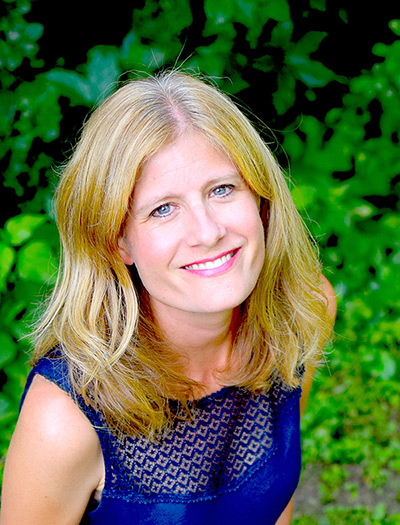Author Q&A: Kaethe Schwehn
by Kaethe Schwehn (06MFA), Bloomsbury Publishing, 304 pp

In the opening scene of Kaethe Schwehn’s debut novel The Rending and the Nest, the book’s narrator, Mira, scales a towering scrap heap called the Pile to scavenge for useful items in a bleak, post-apocalyptic world. With 95 percent of Earth’s population having vanished in an event known as the Rending, Mira is a member of a surrogate family fighting for survival in a ramshackle village.

Schwehn’s dystopian setting wasn’t borne entirely from her imagination. In her early 20s, before she arrived at the Iowa Writers’ Workshop, the author spent a year living at a Lutheran village in a remote region of the Cascade Mountains in Washington. In search of an idyllic retreat, Schwehn instead found a landscape scarred by copper mining, a harsh winter that dumped 354 inches of snowfall, and an isolated community of about 65 people who, like her, were grappling with complicated pasts and uncertain futures. Like the Pile of her fictional village of Zion, the real-life mountain community sat alongside mounds of mining debris that stretched hundreds of feet high.
Schwehn mined that chapter of her life in a 2014 book titled Tailings: A Memoir. It also serves as a reference point for her new book, which similarly explores themes of community, faith, and the importance of telling your own story.
Schwehn recently spoke with Iowa Alumni Magazine from her home in Northfield, Minnesota, where she teaches creative writing at St. Olaf College.
IAM: You studied poetry at the Iowa Writers’ Workshop; how has that background shaped your fiction writing?
SCHWEHN: Attention to words and the rhythm of language is the foundation of good writing. This book is rooted in images, and sometimes in my writing it’s the images that pull me along. I wanted to write a good story, too, that truly engages the reader and keeps them reading, so that was a whole new set of skills to learn and understand.
IAM: Did you always want to write a science-fiction book?
SCHWEHN: No, I never thought I’d write something like this. I’ve always liked to write weird and imaginative things and explore absurd, strange images. And the post-apocalyptic landscape in fiction is often a great blank slate for strange things to happen.
Obviously there’s a lot of post-apocalyptic, dystopian fiction out there right now, and I think a lot of times writers use both the past and future as a different lens to view our present. That’s part of what drew me to writing a post-apocalyptic book. But much of what happens in the book was all a surprise to me. I don’t plot books out beforehand; I write to surprise myself. It just sort of unspooled.
IAM: What do you hope readers take away from your novel?
SCHWEHN: The characters in this novel make choices about how they’re going to tell their stories of what happened before the apocalypse, because they essentially all meet at this moment, and they get to narrate their past. The main character, especially, is confronted with the story she’s telling about herself. I hope the book challenges people to think about the way they tell the stories of their own lives.
